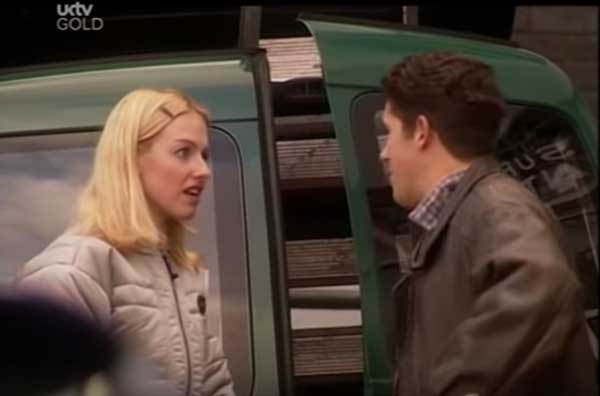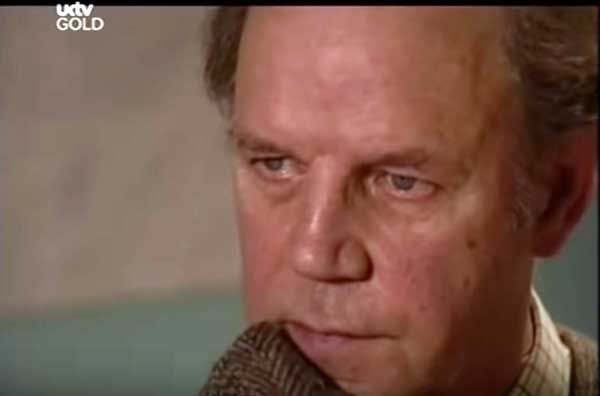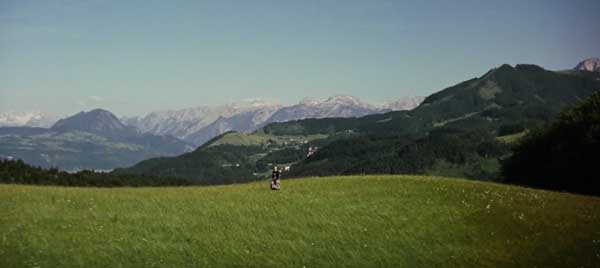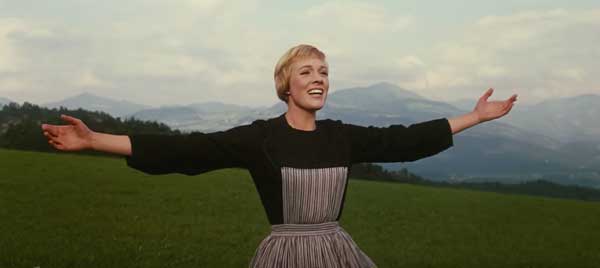FREE Film School: Camera Angles
I’m writing a series of FREE Film School posts to give aspiring filmmakers some ideas on how to teach yourself filmmaking. Recently, I’ve talked about shots used by filmmakers, what they are called and how and when they are used.
In the last few lessons, I’ve run through most of the basic filmmaking framing styles. As filmmakers, it’s easy to get tempted into wanting to use weird and wonderful shots. Or the shots which stand out and get filmmakers and critics talking, like long tracking shots. For example, when I was at art college, everyone wanted to talk about the trombone shot in Jaws.
There’s nothing wrong with that. It’s understandable (and welcome) for aspiring filmmakers to get excited about extraordinary moments in film history. However, we have to remind ourselves that successful filmmakers spend most of their energy capturing the basic shots and using them expertly. And expert use means an audience probably won’t notice unless they make a point of looking (as we are in this series of lessons).
They say the audience shouldn’t be aware of the music of a film, if it’s done right. The music should combine so perfectly with the image that the audience are lost in the moment. If the audience notice the music, they will be taken out of the story. And perhaps the same should be said about shot selection and framing.
Camera Angles
Now, we’re going to look at camera angles. Any shot – be it extreme wide, medium or close-up – also needs an accompanying angle. Essentially, there are 3 main angles: eye level, looking up and looking down.
For example, you might have an extreme wide angle, but looking down (like an aerial shot). Or you might have a medium close-up but angled up.
In general terms, as filmmakers we should be thinking about how to convey the emotion of the scene, without the audience noticing. Perhaps this runs counterintuitive to our need to impress folks with our filmmaking prowess. That’s why it’s sometimes best to remember to leave your ego at the door when screenwriting or shooting a film.
Having said that, sometimes we want to shock the audience or make them feel uncomfortable. I talked a bit about this in my post about the 180 degree rule. As long as you’re making the choice for the sake of the story and not simply to show off, then you’re on the right track.
Eye Level
The eye level shot represents our natural human way of seeing things. With many people now shooting photos or video with their smartphones, most of the time they shoot from eye level. It simply feels natural to hold the camera in front of our faces and start filming or snapping.
But when we see someone squat down to take a photo, we think, “Oh, they must be a photographer!” However, even in professional shoots, most shots are taken at eye level. It’s the most standard angle which generally does nothing to disturb the audience. Therefore, it’s the perfect angle for risk free filmmaking.
Watch any TV soap and you’ll see the majority of shots will be taken at eye level. This is because soaps are produced under huge time restrictions and there’s simply no opportunity to try out different angles. Due to this restriction, soaps (and other shows like sitcoms) have to play it safe.
Here’s an episode from BBC TV show Doctors. As an aside, when I was a composer we got to pitch to write the music for the title track. We got down to the last 3, but were up against big publishing companies (I seem to remember Jeff Wayne Music was one) and one of them got picked ahead of us.
This is the very first episode of the show (Wikipedia says it was broadcast on 26 March 2000).
Roving Eye Level
You can see how the camera stays roughly at eye level most of the time. In this case, they have chosen a roving handheld style. This style actually came from documentary filmmaking but became a popular choice as it had a very realistic, fluid feel to it. The angle and movement of the camera feels like an anonymous watcher and represents us almost literally.
Now, is the camera actually at eye level? To me it feels like the camera is just below eye level. But also as the camera doesn’t switch from its position as “roving human eye”, the camera also tilts up and down during the shot to follow the action. If a character is standing on a chair, we’re going to get an angle up. If a character drops something on the floor, the camera tilts down instinctively to capture the action.
My guess is the camera operator has the camera resting on his or her shoulder. This is a good position to allow this kind of roving movement.

But I would point out once again, most of the shots are from below or just below eye level. It’s a subtle difference and one often used in professional filmmaking. Do you know why this angle is chosen?
Take this shot, for example:

The camera appears to be about chest level looking up. Even in this close-up “choker” shot, the position of the camera is about level with the bridge of the actor’s nose (not eyes). Here we’re talking about slight changes in angle which can make a difference to how the audience unconsciously perceive the story.

A slight angle makes things more 3 dimensional
But what’s the reason? I don’t have a definitive answer, however my belief is this slight angle creates a more interesting framing. It’s like the rule of 3rds, there’s simply something more pleasing about a slight angle, rather than a direct eye level shot.
I mean, taking the first (choker) shot example, shooting from the chest-level upwards gives the 2 actors a perspective. In other words, it is like looking up at a building so the lines of the building converge towards a vanishing point. Whereas, if we simply look at the building side on, we’ll get a very flat 2D look.
We’re talking about a very subtle difference here. But a skilled cinematographer understands the power of subtle differences.
High Angle
Shooting from a high angle means the camera will be looking down on the subject. This encourages the audience to see character as vulnerable. In some sense, the audience take the position of an adult looking down on a child. Or of a god looking down on mere mortals.
I have written previously about how this shot is used on one well known film, The Godfather. While Don Corleone is a powerful character most of the time, the moment he is attacked and shot the camera switches to a high angle.
The Shawshank Redemption
Another famous example of a high angle shot is in The Shawshank Redemption (1994). where Tim Robbins’ character stands half naked in the rain and raises his arms to the heavens. This moment is so important in the film that the image is used on the cover.
Note how the camera angle switches from a low angle looking up at Robbins, to a high angle looking down on him. In this film, Robbins’ character is looking for redemption, often seen as a spiritual journey. And in this scene we see him reaching out his arms to the heavens.
As we look down on him from God’s point of view, what are we the audience reminded of? We are put in the place of a parent looking down at a child, and the child is reaching up to us, seeking our comfort. Anyone reading this who has children of their own will instantly recognise this view point.
In this scene, the switch from low angle to high angle switches us from child POV to parent POV. But why? Does this camera angle change represent a transformative moment in the story for the character? Does the camera switch tell us Robbins’ character has finally learned to go from powerful (egotistical) to vulnerable (asking for forgiveness)?
The Sound of Music
In another very famous moment from an old classic film, we again see the high angle used. Interestingly, both moments feature the main character with arms outstretched. Coincidental perhaps, but this tells us something about how the filmmakers see this high angle shot. Again, we see Julie Andrews’ character reaching up to us like a child to a parent.
However, while in former example the camera switches from low to high angle, in The Sound Of Music (1965) clip the camera goes from high to low angle. In addition, the high angle is barely above the subject for more than a few seconds.
After flying in from an extreme wide shot, the camera then cuts to a medium long shot.
Different Stories, Different Uses
So we can see how the shot used in different films conveys a different emotion.
In the first film we are observing a character transformation: he must become like a child to a parent to ask forgiveness.
In the second, Andrews’ character is celebrating the beauty of her breathtaking surroundings and the joy of life. But by the end of the sequence she reveals something more troubled within her.
We can see that in the 2nd example, the camera moves quickly to an eye level shot (or just slightly above eye level). Plus, the subjects arms are not reaching upwards, but rather reaching outwards. The emotion is more one of reaching out to her surroundings, whilst also encouraging us to reach out (with our eyes) too.
After a long sequence, the camera angles move slowly lower and lower until the final shot is a pretty low angle, looking up at the subject.
So, whilst the sequence opens in a burst of joy and exuberance, it ends rather sadly as the subject looks forward to a time in the future when she can be truly happy again. Notice how we see her gazing longly into the distance as she sings this, as if she is gazing into her own future.
Therefore, in some sense, this second sequence is the reverse of the first. Also note, while the 2nd is the opening scene, the 1st comes towards the end of the film. Bear this in mind when thinking about a main character’s arc in your own story.
Both scenes take us on a journey. The first takes us from a low angle to a high, while the second takes us from a high angle to a low. This is a powerful demonstration of how the cinematography of a film works best when it is in sync with the character’s journey.
This is really such an important lesson in filmmaking as a whole. Not just cinematography, but we aim to have everything work together to create a whole. Which why the director of a film is held in such high esteem – ultimately it’s the director’s task to coordinate every element.
Eager to learn more?
Join our weekly newsletter featuring inspiring stories, no-budget filmmaking tips and comprehensive equipment reviews to help you turn your film projects into reality!
Simon Horrocks
Simon Horrocks is a screenwriter & filmmaker. His debut feature THIRD CONTACT was shot on a consumer camcorder and premiered at the BFI IMAX in 2013. His shot-on-smartphones sci-fi series SILENT EYE featured on Amazon Prime. He now runs a popular Patreon page which offers online courses for beginners, customised tips and more: www.patreon.com/SilentEye




